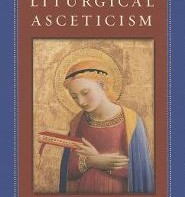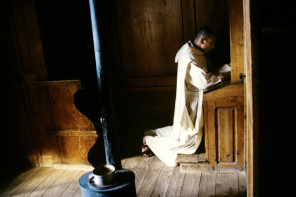In terms of hardware, community is one of the biggest pieces. But a monastery, whether Benedictine or Kagyu, is not just any intentional community. As a structure in space, a monastery has intentionality designed into every square foot. As a structure in time, a routine that carries practitioners toward greater balance, compassion and wakefulness, a monastery must be flexible and free enough to adapt to changing circumstances and to give monks time to be quiet and still, yet rigid enough to keep monks active and productive. Thus an Art Monastery is not just your average artist colony. It is informed by the history of monastic architecture, as well as the routines that have guided monks for hundreds of years.
Monastic discipline is another piece of technology we apply to art-making. At certain times of the year we get up at the same time, work together to sustain ourselves as well as to make art (be it dance, music, theatre, painting, sculpture, performance art, etc….), and engage in contemplative activities like meditation, chant, and reading together throughout the day. Our meditations focus our minds and give us insights that we can apply to our individual or group creative work. In turn, the process of art-making benefits our progress along our personal spiritual path, which may differ greatly from Artmonk to Artmonk.
At an institutional level, we focus on practice as much as on product. We consider ourselves an alternative form of art institution, and thus prize new ways of thinking about art: as devotion, as offering, as gift, as sacred act, as ritual, as individual expression of the divine, as teacher, as priest, as sacred text, and as sacrifice. Similarly, we are an alternative economy for artists and Artmonks alike: we practice resourcefulness and community in order to liberate artists from the prevailing economics of art, one that either commodifies a work or disregards it as dangerous or political.
We apply monastic forms of governance to our community living: we experiment with monastic rules and vows. This year, for example, four of us have taken yearlong Artmonk Vows to practice gratitude, fidelity, and resourcefulness. We think about art as a lineage, or as a number of branching lineages, some of which are directly applicable to our vision of personal awakening and cultural transformation. Like other monastic traditions, we experiment with functional (rather than absolute) hierarchies. Each Art Monastery could have an Abbot or Abbess, as well as a spiritual director and an artistic director.
For the past three years, we have run three public and two private Artmonk Retreats, laboratories for connecting silent
Like many monasteries, we are interested in being both removed from the world and actively engaged to make it better through service and
This process is just a few years old, and we have much to learn. For example, even though we have been occupying a few rooms in a medieval monastery in Italy for the past couple of years, most of us have more experience with meditation retreats in Tibetan and Theravada Buddhist lineages than with the realities of western monastic life. And while the ideas for much of what we do are borrowed from other monastic sources, they often have to be rebuilt from the ground up to be useful and relevant to us. How can we honor tradition, even as we borrow from and adapt it to our unique mission?
These are the kinds of creative problems Artmonks love most.
If you’d like to get involved, visit our website for more information: http://






Nathan,
How much do you think the search for God is necessary for a way of life to be called “monastic”? For example, the opening of St Benedict’s Rule is:
“Listen carefully, my child,
to your master’s precepts,
and incline the ear of your heart (Prov. 4:20).
Receive willingly and carry out effectively
your loving father’s advice,
that by the labor of obedience
you may return to Him
from whom you had departed by the sloth of disobedience.” (emphasis added)
St Benedict is here presenting the monk’s goal as union with God through the way of obedience. He also calls the monastery the ‘school of the Lord’s service’.
It seems to me that Christian monasticism at least exists not to serve the monks, but to help the monks serve God, and be united to Him. How far can Western monastic technologies be divorced from a relationship with God while still remaining effective (and still remaining truly monastic)?
Also, what is the goal of monasticism in Buddhism and other non-Christian forms (that you’re more familiar with than I am)? Do non-Christian forms of monasticism lend themselves more easily to flexible use of different technologies?
And finally, would the Art Monastery community say its goal is primarily spiritual, sought through the way of art, or artistic, created through a spiritual path? Or a third alternative?
Thanks again for these posts!
These are great, very important questions, Cole.
God, when I’m brave enough to call it that, is certainly primary to my own monastic inclinations. I’m sure we could have a nice, long discussion about the benefits of actually using the word “God” versus something else… For some people I think it’s an extremely useful, for others, not so much.
You can “incline the ear of your heart” without necessarily inclining it toward the concept of God (in fact, I’m willing to bet Christian contemplatives would agree: the less of a rigid concept of God you have, the more likely you will hear His voice…). God is in us, and we must only still ourselves enough to hear Him, or accept His grace. But we must first work to set up the best possible conditions to generate this stillness: a life in peace with plenty to eat, supportive relationships, and time to practice. A monastic life is just one example (a pretty good one, in my opinion) of these conditions.
And these conditions, especially in monastery, are particularly amenable to a mindset of serving (God). “Yet not my will, but Thy will be done” is a favorite meditation of mine.
The question remains, what are you serving, if not God?
You can be obedient to the Abbot or Abbess, but this doesn’t seem to be the real point. How about serving the community itself then? This seems closer, but certainly not the same as serving God.
What is the greatest thing a staunch atheist can serve? Humanity? Nature? The Good? Life? Being? (I think we need a philosopher here). I don’t know the answer. What matters more is the intention, I think, the spark to serve something bigger than yourself. Without even an unconscious spark to serve, how’d you end up in this cloister in the first place?
I’m leaning toward saying that a monastery wouldn’t be a monastery if its sole purpose was to support individuals serving themselves.
To me, it’s almost as if contemplative practice leads one to God, whether or not that is what one is aiming at in the first place! Somewhere I heard a nice line, something like: encountering God is an accident, and contemplation only makes us more accident prone.
This brings up real issues about full disclosure; folks should know what they’re getting into before they sit down. That is, we have a responsibility to not entice anyone into contemplative practice or a monastic lifestyle with promises merely of inner peace, a better life, greater creativity, a stainless existence on earth in pursuit of something greater in the afterlife, etc. We don’t have to say “DANGER: GOD AHEAD!” (although there’s something to that…) but we what we can do is talk openly, from our own experiences, and guide each other to read the experiences of others who have undertaken this lifestyle wholeheartedly.
So even for a fairly secular organization like the Art Monastery Project, it seems important that anyone with a calling to join us be willing to have those discussions about what their goals are, what they think they will get out of it, if anything, and to be willing to do a little homework before committing.
From where I sit, and where I think the Art Monastery is coming from too, we’re not out to replace any existing spiritualities. Nor is our goal to lift art itself up as some kind of spirituality, although it certainly has spiritual aspects.
I’ve frequently envisioned that each Art Monastery would have a “Spiritual Director” of sorts, who in addition to the Abbot or Abbess (a.k.a. Executive Director) and artistic director, would be in charge not of telling anyone what to do or what is true, spiritually, but who would have a breadth of learning and experience to be able to help Artmonks and visiting artists from a variety of backgrounds navigate the difficult territory they might encounter. This spiritual director could easily have a solid faith of a particular, traditional sort, but would be open to, even excited about the moment to moment translations that interfaith conversations have to have, at the same time that she appreciated the very real differences involved.
I’ve taken the most basic level of lay-Buddhist vows, to take refuge in (to serve, at some level) Buddha, Dharma, and Sangha.
Buddha can refer to the person we call the Buddha, Siddhartha Gautama, as an example of fully awakened being. It also refers to all highly awakened beings, all true teachers one encounters on the path, as well as the awareness that stairs out of your own eyes, your own inner Buddha/teacher.
Dharma, at a microcosmic level represents the teachings of the Buddha, and all authentic or useful teachings or artifacts one encounters on the path. At a macrocosmic level, Dharma is perhaps more closely analogous with God. It is Nature, the Way, the Truth; reality’s capacity to wake you up! It is the teacher we encounter as Other—the Thy in “Yet not my will, but Thy will be done.”
Sangha originally referred to the monastic community around you; your fellow travelers on the path. Now it seems to refer to anyone on the path, or even to all of humanity. At another level Sangha seems to connect Buddha and Dharma. Through the Sangha, you, the Buddha, encounter the Dharma. Does this parallel the Christian Trinity: through the Holy Spirit, you the Son, encounter God the Father? Hmmm… Seems like a shaky analogy, but it’s fun 😉
And in the end, none of these are more than useful concepts.
Anyway, lots of good questions remain here. Even though I would call myself a Buddhist, I’ve read more about Christian monasticism, and feel like an outsider to both. (Perhaps this is why the Art Monastery Project felt like a dream come true when I found it…).
BTW, FWIW, I’ve heard some Buddhists say that the next Maitreya Buddha, akin to the next coming of Christ, will incarnate as community.
What a good conversation to have. I wondered this myself, Nathan, regarding the “monastic” element of your project.
You said: “To me, it’s almost as if contemplative practice leads one to God, whether or not that is what one is aiming at in the first place!”
And I must agree. Also agreeing that although some people may not prefer the word God, or even be quite aversive to it, I find it a useful term.
I recently read a book by a modern Carmelite named Wilfrid Stinissen, called “Into Your Hands, Father: Abandoning Ourselves to the God Who Loves Us”. As long as the Christian context doesn’t put one off, the meat of that small book is really profound. It is about utter surrender, “Thy Will Be Done” taken to its utmost, and includes very accurate and frank talk of awakening. I was quite blown away, as many modern books on contemplative prayer focus extensively on history, technique or beginner’s needs. I highly recommend it.
Ona,
Thanks for the comment, and the book recommendation! I’ve put it on my to-read list. Another book I’ve enjoyed is Martin Laird’s Into the Silent Land, as well as, of course, the classics the Cloud of Unknowing and especially Julian of Norwich’s Revelations of Divine Love.
Cole
Nathan,
These two statements are exactly what I was fishing for:
“What matters more is the intention, I think, the spark to serve something bigger than yourself.”
“I’m leaning toward saying that a monastery wouldn’t be a monastery if its sole purpose was to support individuals serving themselves.”
I agree with you that you’ve got monasticism, or at least the beginnings of it, when you have that “spark to serve something bigger than yourself”. That’s how a monastic starts, why he or she goes into the desert. (And obedience to the Abbot, of course, is a monastic technology to help the monk stay pointed to service outside himself, preventing him from slipping into self-service and worship of himself as a holy being.) I’m right with you that the heart of the monastery is that “inclining toward” the Other (God in Christian monasticism, the Dharma in Buddhist monasticism, as well as the “other” of one’s brother or sister in the monastery).
I like your following two sayings:
“encountering God is an accident, and contemplation only makes us more accident prone.” – Amen!
“Through the Sangha, you, the Buddha, encounter the Dharma.” – This strikes me as fundamentally true. We encounter God through solitary contemplative prayer, of course, but we also encounter Him through the people He has made and given us to be in relationship with. The Desert Fathers and Mothers are very good at this practical, relational side of holiness. You’re forever reading stories of abbas and ammas who underwent the most severe austerities, but as soon as a guest stopped by the hermitage, stopped what they were doing to give him a bed, more and better food than they would ever eat themselves, and a listening ear. Community forms us in love, and a hermit is not ready to go out into the desert (according to St Benedict) until he has been formed by this community, which involves not only toughening him up for spiritual warfare, but also softening him toward others, so that his retreat is not a solitude of misanthropy, but of love toward the whole world.
I like your idea of a spiritual director as well, plus the Art Monastery’s artistic director, to help guide the artmonks along the spiritual path that’s opening to them. (I suspect that having someone grounded in a particular, concrete tradition would be best, as I find the deeper we grow roots in one particular tradition, the more we’re able to touch the deep roots in another tradition.)
I’m looking forward to the time when I can come visit you in SF and the gang in Italy to talk more. I hope your response here can help put anyone else at ease who might have lingering reservations about the concept of the Art Monastery, as it has mine.